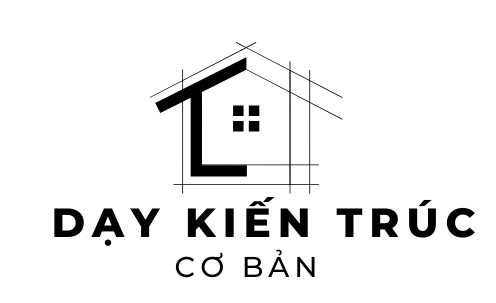In the last few years, artificial intelligence has reshaped many fields, but arguably no sector has seen more remarkable advancements than digital imagery.
At the cutting edge of this breakthrough are GAN models – a clever application of deep learning that have revolutionized how we generate graphical content.
The Basics of GANs
GANs were initially developed by AI pioneer Ian Goodfellow and his team in 2014. This pioneering methodology comprises two neural networks that work together in an competitive dynamic.
The first network, on adobe.com called the composer, strives to synthesize visual content that mimic realistic. The analytical component, referred to as the evaluator, tries to distinguish between genuine images and those developed by the first network.
This interplay produces a robust improvement cycle. As the critic develops greater accuracy at detecting generated content, the generator must improve its skill to produce more realistic visuals.
The Advancement of GAN Frameworks
In recent years, GANs have seen extraordinary improvement. Original architectures faced challenges in creating detailed pictures and often produced indistinct or misshapen results.
Still, advanced generations like DCGAN (Deep Convolutional GAN), ProGAN, and Style GAN have dramatically improved visual fidelity.
Perhaps the most outstanding breakthrough came with Style Generative Adversarial Network 2, constructed by NVIDIA researchers, which can generate exceptionally realistic human images that are regularly impossible to differentiate from genuine images to the typical viewer.
Implementations of GAN Models in Picture Synthesis
The applications of GAN architecture in digital imagery are vast and persistently increase. Consider some of the most compelling utilizations:
Art Creation
GANs have created new possibilities for artistic development. Applications like Artbreeder facilitate individuals to produce remarkable pictures by simply entering what they envision.
In 2018, the artwork “Portrait of Edmond de Belamy,” made by a GAN, fetched for a remarkable $432,500 at Christie’s sale, constituting the debut transaction of an AI-made artwork at a leading gallery.
Visual Improvement
GANs show great capability in operations like picture restoration. Programs powered by GAN technology can refine low-quality graphics, restore deteriorated visuals, and even add color to non-color pictures.
This functionality has substantial value for historical documentation, allowing for ancient or damaged photographs to be refreshed to remarkable definition.
Sample Generation
In machine learning, possessing large data collections is critical. GANs can produce further training data, aiding in solve scarcity in available examples.
This application is specifically valuable in industries like healthcare visualization, where safety issues and scarcity of unique instances can reduce usable training data.
Fashion and Design
In the fashion industry, GANs are being used to produce new garments, accessories, and even full assortments.
Apparel developers can leverage GAN applications to preview how unique concepts might appear on diverse physiques or in multiple tints, markedly expediting the design process.
Media Production
For creative professionals, GANs deliver a robust tool for producing distinctive visuals. This is specifically valuable in domains like commercial media, video games, and internet communities, where there is a continuous need for innovative graphics.
Implementation Difficulties
In spite of their impressive abilities, GANs still face several development obstacles:
Development Challenges
A major problem is training instability, where the creator generates only certain kinds of images, ignoring the full diversity of viable results.
Dataset Limitations
GANs evolve through the information they’re fed. If this sample collection includes preferences, the GAN will mirror these prejudices in its creations.
To exemplify, if a GAN is trained primarily on visuals of people with certain physical characteristics, it may have difficulty produce diverse images.
Processing Demands
Training complex GAN networks requires significant processing power, including sophisticated GPUs or TPUs. This establishes a restriction for many researchers and modest institutions.
Moral Questions
As with many artificial intelligence systems, GANs generate major ethical considerations:
Generated Imagery and Misrepresentation
Perhaps the most troubling application of GAN systems is the fabrication of false imagery – remarkably authentic but fabricated media that can depict existing persons performing or stating things they never actually executed or voiced.
This capability generates serious concerns about disinformation, election interference, non-consensual intimate imagery, and other harmful uses.
Confidentiality Questions
The potential to synthesize convincing images of humans generates significant privacy concerns. Questions about agreement, entitlement, and suitable implementation of likeness become gradually crucial.
Creative Value and Acknowledgment
As AI-synthesized artistic output becomes more sophisticated, discussions surface about creatorship, citation, and the merit of human creativity. Who deserves recognition for an image created by an AI model that was constructed by coders and educated on designers’ outputs?
The Outlook of GAN Frameworks
Considering future developments, GAN architecture continues to evolve at a fast tempo. Various intriguing advancements are on the verge:
Integrated Models
Advanced GANs will likely evolve continually adept of generating across diverse domains, merging text, graphical, auditory, and even cinematic features into harmonious generations.
Improved Direction
Developers are constructing systems to deliver operators with improved guidance over the developed content, permitting for more precise modifications to specific aspects of the developed images.
Better Resource Usage
Upcoming GAN frameworks will potentially become more streamlined, demanding minimized computing power to construct and operate, making these capabilities more attainable to a broader collection of creators.
Closing Remarks
GANs have unquestionably altered the domain of picture production. From generating artwork to advancing clinical imaging, these formidable models unceasingly broaden the possibilities of what’s achievable with computational systems.
As these applications unceasingly improve, addressing the significant constructive uses with the moral concerns will be essential to assuring that GAN models adds constructively to global progress.
Regardless of whether we’re using GANs to generate beautiful images, reconstruct ancient depictions, or progress clinical investigations, it’s plain that these impressive models will persistently affect our graphical landscape for generations to ensue.
ai nudifiers
